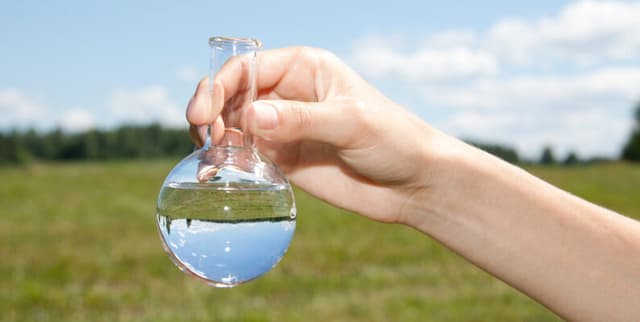Telangana Water Quality for Crops and Livestock
Data Science and Analytics
Tags and Keywords
Trusted By




"No reviews yet"
Free
About
This dataset offers a vital resource for understanding groundwater quality in Telangana State, India. It focuses on the post-monsoon season for the years 2018, 2019, and 2020, providing crucial insights into water suitability for various applications, particularly agriculture and livestock. Water quality is paramount as it directly impacts crops and livestock, with poor quality potentially leading to crop failure or animal diseases. By analysing the contained chemical parameters and classifications, users can determine appropriate water usage and identify crops resilient to specific water conditions. The dataset facilitates the development of machine learning models to classify water quality into nine distinct categories, thereby aiding in informed decision-making for water management.
Columns
The dataset comprises 26 columns, each providing specific details about the groundwater samples:
- sno: A serial number for each record.
- District: The district where the water sample was collected.
- Mandal: The mandal (administrative division) where the sample was collected.
- Village: The specific village of the sample collection.
- Lattitude (lat_gis): Geographic latitude of the sampling location.
- Longitude (long_gis): Geographic longitude of the sampling location.
- gwl: Ground water level.
- season: Indicates the season of data collection, specifically "post monsoon".
- pH: Hydrogen Ion Concentration, a measure of acidity or alkalinity.
- E.C: Electrical Conductivity, expressed in µS/cm, indicating the water's ability to conduct electricity.
- TDS: Total Dissolved Solids, reflecting the concentration of dissolved inorganic and organic substances.
- CO3: Carbonate concentration.
- HCO3: Bicarbonate concentration.
- Cl: Chloride concentration.
- F: Flouride concentration.
- NO3: Nitrate concentration.
- SO4: Sulphate concentration.
- Na: Sodium concentration.
- K: Potassium concentration.
- Ca: Calcium concentration.
- Mg: Magnesium concentration.
- T.H: Total Hardness, the sum of calcium and magnesium, indicating water's capacity to neutralise soap.
- SAR: Sodium Adsorption Ratio, an index for sodium hazard.
- Classification: A target variable classifying water into one of nine classes (C3S1, C2S1, C4S1, C4S2, C3S2, C4S4, C3S3, C4S3, C1S1), indicating suitability for irrigation based on salinity and sodium levels.
- RSC meq / L: Residual Sodium Carbonate, defined as the excess of carbonate and bicarbonate over alkaline earths (Ca2+ and Mg2+).
- Classification.1: Classifies water as safe, marginal, or unsuitable based on RSC values.
Distribution
The dataset is provided in CSV format and consists of three separate files, one for each year:
ground_water_quality_2018_post.csv, ground_water_quality_2019_post.csv, and ground_water_quality_2020_post.csv. Each file contains 26 columns. The 2018 file is approximately 72.78 kB. Each dataset appears to contain 374 valid records, suggesting a total of 1122 records when combined.Usage
This dataset is highly valuable for:
- Training Machine Learning Models: Classifying water quality into various categories (e.g., C1S1 to C4S4) to predict its suitability for different uses.
- Agricultural Planning: Assisting farmers in selecting appropriate crops that can tolerate specific water quality conditions, thereby preventing crop failure.
- Water Resource Management: Informing decisions on water allocation and treatment based on quality assessments.
- Environmental Monitoring: Tracking changes in groundwater quality over time due to environmental factors or human activities.
- Public Health: Assessing the safety of groundwater for livestock consumption, with detailed guidelines on TDS levels and their impact.
Coverage
The data was collected from the Telangana Open Data portal and covers Telangana State, India, with samples taken from various districts, mandals, and villages across the state. The time range includes the post-monsoon season for the years 2018, 2019, and 2020. There are no specific notes on data availability for particular demographic groups, as the data focuses on environmental water quality.
License
CC0: Public Domain
Who Can Use It
This dataset is intended for a diverse range of users, including:
- Agricultural professionals and farmers: To make informed decisions on crop selection and irrigation practices.
- Data scientists and machine learning engineers: For developing predictive models for water quality classification.
- Environmental researchers and scientists: To study groundwater chemistry, pollution, and its impact on ecosystems.
- Water resource managers and policymakers: For planning and implementing effective water management strategies.
- Livestock farmers: To assess the suitability of water for animal consumption.
- Students and educators: For academic projects and research related to water science and environmental data analysis.
Dataset Name Suggestions
- Telangana Groundwater Quality Assessment (2018-2020)
- Indian Post-Monsoon Groundwater Suitability Dataset
- Agricultural Groundwater Quality in Telangana
- Telangana Water Quality for Crops and Livestock
- Groundwater Chemical Analysis: Telangana, India
Attributes
Original Data Source: Telangana Water Quality for Crops and Livestock
Loading...
Free
Download Dataset in ZIP Format
Recommended Datasets
Loading recommendations...
